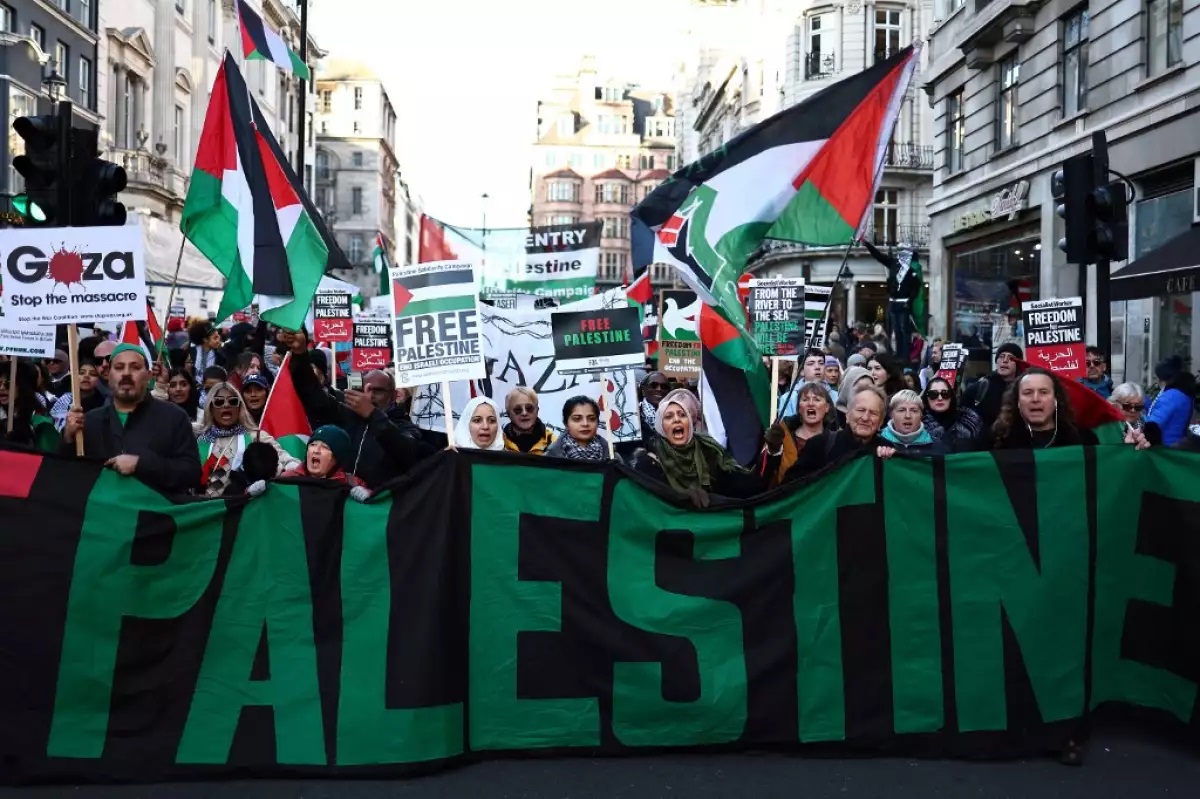
Consequences of the Oslo Agreement
The first intifada led to the signing of the Oslo Accord in 1993. Under this agreement, the Palestine Liberation Organization (PLO) recognized Israel, while Israel recognized the PLO as the representative of the Palestinian people, (one of the criticisms of the agreement is that it did not establish Israel’s recognition of the State of Palestine). The agreement stipulated the establishment of a provisional Palestinian authority for five years, in preparation for negotiations on the final status regarding Jerusalem, refugees, settlements and borders. Although the agreement did not fulfill the Palestinian people’s aspirations for complete liberation, it represented recognition by Israel of the Palestinian cause. Some Palestinians welcomed it as an achievement resulting from the Stone Intifada, while most factions rejected it as a renunciation of fundamental national principles.
It should be noted that the issue of recognition of Israel is very sensitive for Palestinians, as it means the loss of the 1948 lands and the acceptance of the displacement of its inhabitants. What makes the issue even more delicate is that the majority of Palestinians are descendants of those who were expelled on that date. For this reason, PLO leaders tried to justify recognition to their people by arguing that it would allow them to build a national authority that would serve as a basis for recovering rights later.
As for the Fatah movement, it faced a political and popular setback, but maintained the cohesion of its leadership around Yasser Arafat, which limited its fragmentation, while some of its armed members continued to resist the occupation. [1]
The West Bank areas were divided into three sections: A under Palestinian control (18% of the West Bank territory), B under joint control (22% of the territory), and C under full Israeli control (60% of the territory). It is observed how Israel wanted to conserve the land in exchange for granting the Authority control over the Palestinian population conglomerates.
Some Palestinians welcomed it and considered the Oslo Agreement an achievement resulting from the Stone Intifada, while most factions rejected it as a renunciation of fundamental national principles.
The Palestinian political crisis
Since its founding, the PLO was considered the sole and legitimate representative of the Palestinian people, and Fatah de facto dominated its political structure. But the rise of the Hamas movement after the Stone Intifada (1987) reconfigured the Palestinian political map.
After Oslo, Hamas was considered outside the official political framework because it rejected the political line of the PLO and refused to recognize Israel. The PLO asked him to join it, and Hamas accepted in principle, with the condition of reforming the organization and adjusting its representation according to its weight in Palestinian society, since it frequently led the results of university elections. The Los Angeles Times reports, in 1993, the result of an election held at Birzeit University that year.
The PLO rejected Hamas’ demands and continued to appoint members of the Palestinian National Council, despite an article in the PLO charter requiring elections to elect members. [2]
The rise of suicide attacks
The period from approximately 1994 to 2004 is considered one of the most terrifying times for Israel. It began after the Cave of the Patriarchs massacre in Hebron, committed in 1994 when Israeli army doctor Baruch Goldstein entered the Ibrahim mosque and opened fire on people as they prostrated themselves, killing dozens. The other faithful attacked him and killed him. The resistance announced that this crime would not go unpunished, and carried out several suicide attacks in Israeli cities. This was the beginning of a new stage. [3]

The Gaza–Jericho Agreement and the impact on security
In 1994, the Palestinian Authority began to carry out its functions under the so-called Gaza–Jericho Agreement, and Yasser Arafat, along with thousands of Fatah cadres, returned to the Palestinian territories.
The agreement included a security annex that led to the persecution of some members of the resistance by the Palestinian security services, and even the handing over of some of them to Israel. Furthermore, the agreement did not stipulate the dismantling of settlements in the West Bank, so the policy of settlement expansion continued, increasing popular frustration and gradually reducing Oslo’s popularity. [4]
The rise of Israeli extremism and the outbreak of the Al-Aqsa Intifada
After the assassination of Yitzhak Rabin in 1995 at the hands of an Israeli extremist, the political scene in Israel saw a rise of more radical right-wing forces. Benjamin Netanyahu’s victory in 1996 and the formation of tougher governments helped block any prospect of a national solution. Settlement policies and repression against the Palestinians eliminated any push toward the establishment of a Palestinian state.
Peace attempts in the late 1990s failed, and the situation reached its peak when Ariel Sharon, accompanied by hundreds of soldiers and settlers, made a provocative visit to the Al-Aqsa Mosque in 2000, leading to the outbreak of the Al-Aqsa Intifada (the second intifada) and the increase in a wave of bloody attacks that lasted for years, with suicide attacks intensifying in an unprecedented manner. [5]

Israeli escalation and withdrawal from Gaza
In response to the attacks and bombings, Israel intensified its actions, including the assassination of Palestinian leaders (including Ahmad Yasin and Abdel Aziz al-Rantisi), the construction of the separation wall and large-scale military operations (including the battle of Jenin in 2002, which left hundreds of civilians dead).
In 2002, the Arab summit proposed the Arab Peace Initiative, which offered Arab recognition of Israel in exchange for the establishment of a Palestinian state and the return of refugees, but Israel rejected key points.
In 2003, the International Quartet proposed the “Road Map”, which established the creation of a Palestinian state by 2005, but its implementation collided with Israeli rejection.
In 2004, the Israeli army laid siege to the headquarters of Yasser Arafat, who later died under mysterious circumstances, and the Palestinian Authority accused Israel of poisoning him. [6]

Under pressure from the resistance and its use of tunnels, the then Israeli prime minister ordered the withdrawal of troops and the dismantling of settlements in the Gaza Strip. However, the withdrawal left one crucial aspect: Israel maintained control of the borders, sea, airspace and border crossings, which kept the situation under its effective control.
Major suicide attacks
1994: Afula — 8 dead (according to Israeli recognition).
1995: Beit Lid — 22 muertos.
1996: Series of attacks following the murder of “Engineer” Yahya Ayyash — around 22 dead in total.
1997: Mahane Yehuda Market (Jerusalem) — 16 dead.
2001: Dolphinarium club massacre (Tel Aviv) — 21 dead.
2002: Hotel Park (Netanya) — around 30 dead (one of the largest attacks).
2002: Bus #19 (West Jerusalem) — 19 dead.
2002: Attacks in Tel Aviv (Karkur) — 14 dead.
2003: Buses in Haifa and Jerusalem — 17 and 23 dead respectively.
2004: Port of Ashdod — 10 dead.
2005: Tel Aviv attack — 5 dead.
During the period 1994–2005, there were an estimated 140 suicide attacks that killed more than a thousand Israelis and injured around five thousand, concentrating in Tel Aviv, Jerusalem, Haifa, Netanya, and in areas near settlements within the West Bank and Gaza. [7]
Israel has repeatedly rejected plans to withdraw from the West Bank and Gaza and establish a Palestinian state.
In 2001, the first locally made Palestinian rockets were also launched from Gaza towards settlements such as Sderot, which represented a change in the resistance’s strategy, moving from individual operations and the use of stones to the use of short-range rockets as a weapon to reach Israeli cities without the need for ground infiltration, especially after the construction of the separation wall and the withdrawal from Gaza.
The phenomenon of suicide attacks cannot be understood in its full context without understanding the living and social conditions, since an ordinary young person does not commit such acts except under the pressure of economic and social circumstances, political repression and the security pressure they suffer.
You can read the previous articles here:
Palestine before British occupation (1917)
[Segunda parte] The British occupation of Palestine and the beginning of the resistance
Artistic expressions of the struggle of the Palestinian people: the song “Mister Dell” and the keffiyeh
The British withdrawal and the proclamation of the State of Israel: events of 1947-1948
The Palestinian question from 1948 to 1967
After the defeat (Annaksah): the rise of the resistant Palestinian left
[1] The Complete Palestinian Account of the Negotiations from Oslo to Road Map 2: Camp David, Taba and Stockholm Negotiations 1995–2000 – Ahmad Qurei.
[2] Hamas: political thought and practice – Khaled Al-Hroub.
[3] The Cave of the Patriarchs massacre in Hebron – After the Hebron massacre – Ahmad Sameh Al-Khalidi and Hussein Jaafar Agha.
[4] Infiltration: Gaza-Jericho Agreement First – Mahjoub Omar.
[5] The Palestinian cause – A revolutionary vision – Hossam El-Hamlaoui.
[6] Palestinian Center for Policy Research and Strategic Studies (Masarat).
[7] Al-Bayan newspaper of the United Arab Emirates.
Source: www.laizquierdadiario.com

